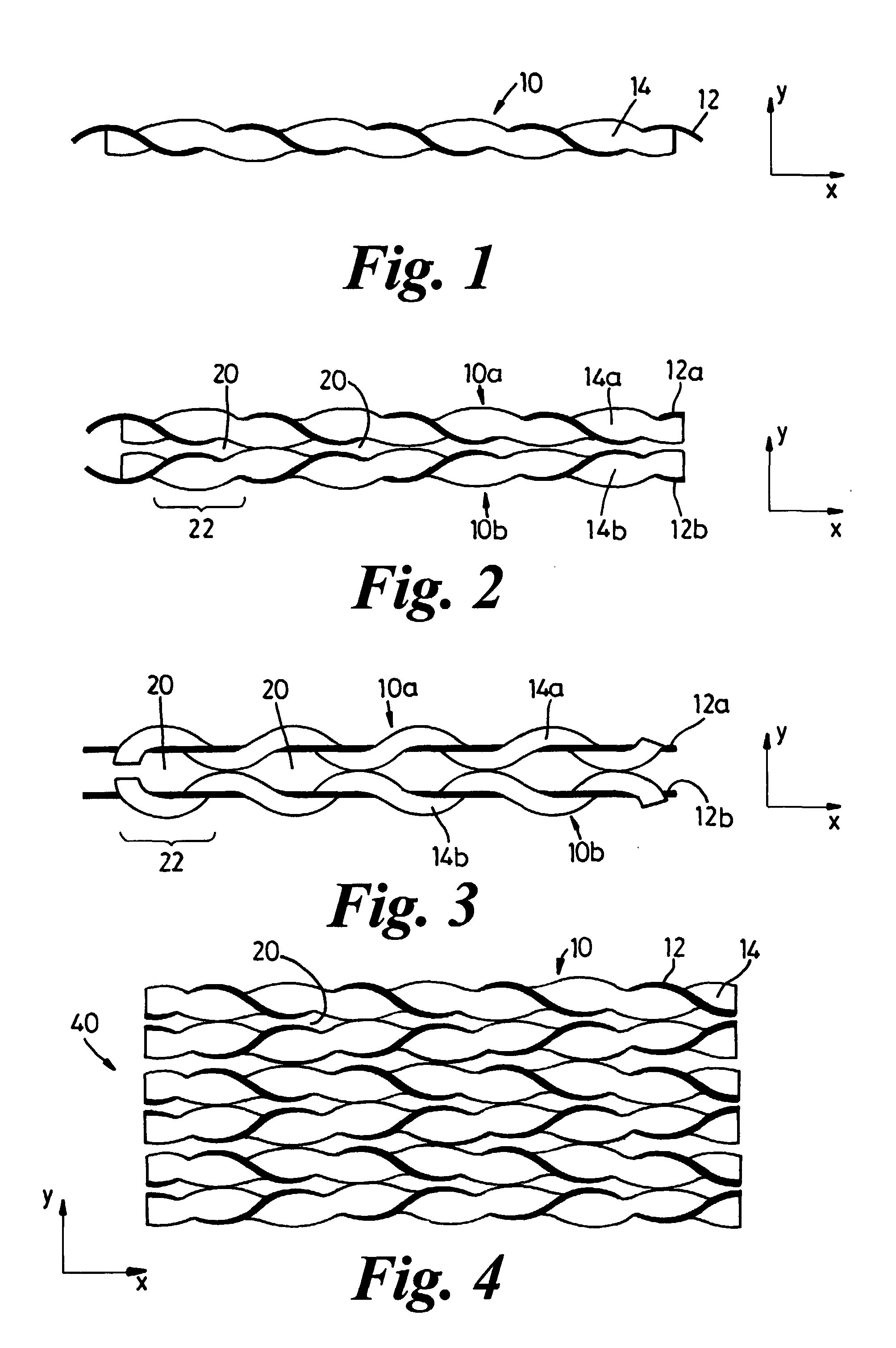Uses of auxetic fibres
- Summary
- Abstract
- Description
- Claims
- Application Information
AI Technical Summary
Benefits of technology
Problems solved by technology
Method used
Image
Examples
Embodiment Construction
FIG. 1 shows an auxetic fibre which may be utilised in the production of porous materials according to the invention. The auxetic fibre 10 comprises a first component 12 and a second component 14. The first component 12 is wrapped around the periphery of the second component 14 forming a helix. Typically, as shown in FIG. 1, the wrapping of the first component 12 around the second component 14 causes a deformation of the second component 14 from a generally linear configuration to a helical configuration. The first component is desirably formed from a material having a high modulus of elasticity, such as carbon fibre, Kevlar®, glass fibre, wire, polyamides, polyesters, polyalkalenes, BET, or a natural fibre such as cotton. The second component is preferably formed from a material of lower modulus of elasticity than the first component. Examples of suitable materials include siloxane, silicone rubber, natural rubber, nitrile rubber or polyamides such as nylon. It should be noted that...
PUM
| Property | Measurement | Unit |
|---|---|---|
| Pore size | aaaaa | aaaaa |
| Pressure | aaaaa | aaaaa |
| Diameter | aaaaa | aaaaa |
Abstract
Description
Claims
Application Information
 Login to View More
Login to View More - R&D
- Intellectual Property
- Life Sciences
- Materials
- Tech Scout
- Unparalleled Data Quality
- Higher Quality Content
- 60% Fewer Hallucinations
Browse by: Latest US Patents, China's latest patents, Technical Efficacy Thesaurus, Application Domain, Technology Topic, Popular Technical Reports.
© 2025 PatSnap. All rights reserved.Legal|Privacy policy|Modern Slavery Act Transparency Statement|Sitemap|About US| Contact US: help@patsnap.com



